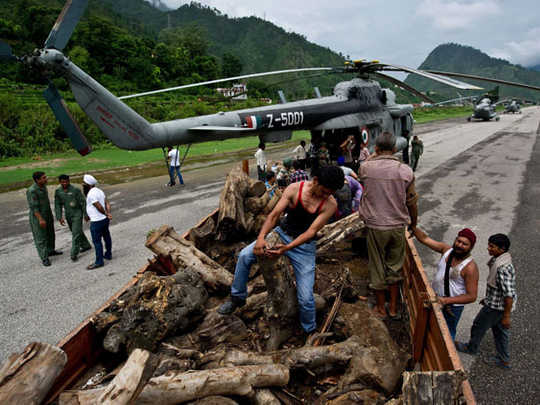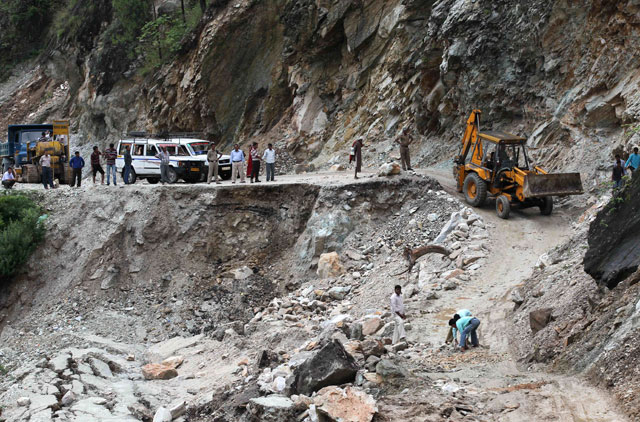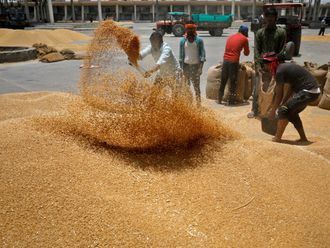
Rudraprayag: Indian officials stepped up efforts on Tuesday to prevent an outbreak of disease in the northern Himalayan region devastated by landslides and flash floods, as rains hampered the rescue of thousands still stranded.
Workers sprayed disinfectant amid concerns about disease from the bodies of hundreds of people who perished when floods hit the state of Uttarakhand.
A helicopter helping victims crashed near a pilgrimage site Tuesday, killing all eight people on board.
Around 60 air force helicopters are taking part in the rescue operation where more than 1,000 people have been killed by floods and landslides since the beginning of last week.
The helicopter which crashed on Tuesday afternoon was on a medical mission near the pilgrimage site of Gaurikund, air force officials said.
“The eight persons on board including five crew members sustained fatal injuries,” said a statement.
Gerard Galway, a spokesman for the air force in Uttarakhand, said the reasons for the crash were being investigated.
The military has been leading efforts to evacuate some 6,000 pilgrims and tourists still stranded throughout the state since the floods hit on June 15.
Raging rivers have since swept away houses, buildings and even entire villages in the state, which was packed with travellers in what is a peak tourist season.
More than 1,000 bridges have been damaged along with roads, cutting off villages and towns.
The scale of the rescue effort has been prompted in part by fears that failure to act swiftly could trigger widespread disease from hundreds of bodies which have yet to be recovered.
Relief workers have been busy preparing for a mass cremation in Kedarnath which is one of the worst-hit areas.
But although tonnes of wood have been flown by helicopter into the area for the cremation, the ceremony had to be postponed on Tuesday following more heavy downpours.
Some 6,000 pilgrims and tourists are believed to be still stranded.
They were caught unaware on June 15 when flash floods, triggered by earlier than expected monsoon rains, swept through the area.
The US has pledged funds for the rescue effort and UN chief Ban Ki-moon voiced his sadness at the scale of the disaster.
“The secretary-general is saddened by the loss of life, and the damage to homes and infrastructure in India as a result of the torrential floods in the northern state of Uttarakhand over the last week,” said his office.
A police official in charge of organising the cremations said belongings and documents recovered from bodies will be used to help with identification while DNA samples will also be collected.
“Under no circumstances can we allow an outbreak of an epidemic,” senior disaster management official K.N. Pandey said.
“We have reports that many stranded people are suffering from diarrhoea and other ailments and have decided to cremate the corpses near the Kedarnath shrine,” he said.
A senior official warned that the death toll of 1,000 could rise dramatically as the grim task of collecting the bodies from rivers and from under flattened villages and other debris continues.
“From the feedback we are getting from people on the ground, people working in scavenging bodies, our estimate is the toll could be anything between 4,000 and 5,000,” a senior disaster management official said.
Helicopters and soldiers have evacuated tens of thousands of people from the floods, while tonnes of food and other emergency supplies have been dropped to those still stranded.
Unmanned drones have also been deployed to scan the thick jungles to find those still awaiting rescue, officials said.
Thousands of soldiers along with the Indo-Tibetan Border Police have been evacuating people by foot, using harnesses and erecting rope bridges across flooded rivers to help them to safety.













